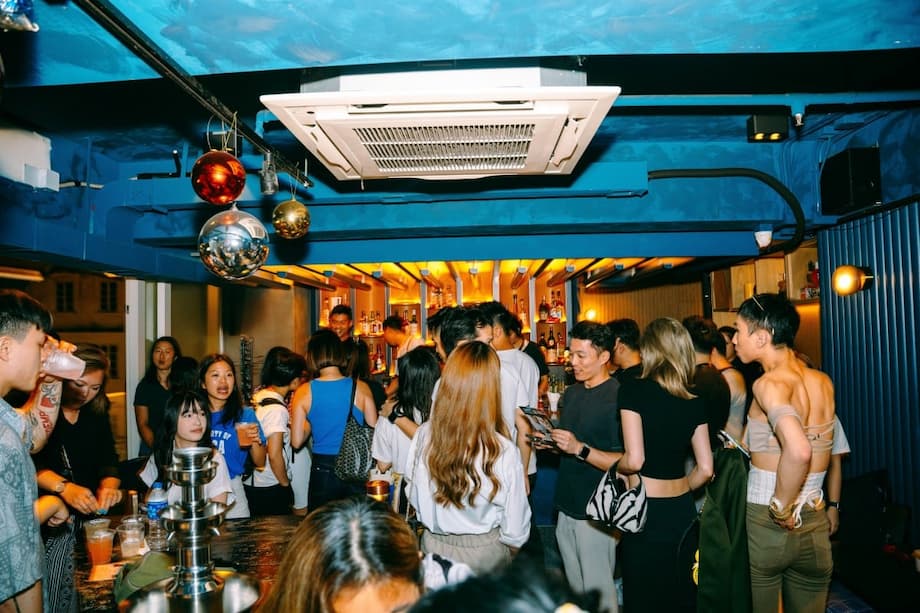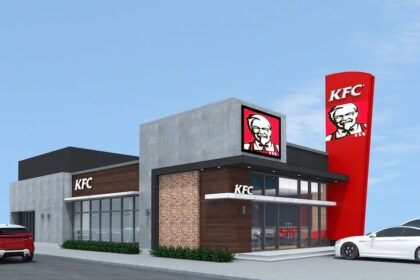A new kind of weeknight out in Hong Kong
On a typical Wednesday night, a quiet ritual plays out across Hong Kong. Small groups of strangers step into restaurants, scan a room of unfamiliar faces, and take their seats with a mix of curiosity and nerves. Over shared plates and steady conversation, people who have never met find a reason to linger. A meal becomes a meeting, and sometimes the start of friendships or future projects. This is the promise of social dining apps, which pair diners for curated group dinners and turn a midweek lull into a social occasion.
- A new kind of weeknight out in Hong Kong
- How the apps make strangers feel like a table of friends
- Why restaurants are saying yes
- What draws diners to sit with strangers
- Safety, etiquette, and trust
- The tech and the business model
- App culture already shapes how Hong Kong eats
- More than socializing, sustainability is on the menu
- What this means for the citys dining scene
- Key Points
Platforms such as Timeleft, Eatwith, and Genie Friends have tapped into a specific Hong Kong rhythm. City schedules are crowded, then volatile. Friend circles can feel tight, then distant when a busy month sets in. These apps offer structure without pressure. Book a table, show up, share food, share stories. The goal is connection, and the setting is friendly territory for anyone who already loves to eat out.
The model has gathered momentum, and scale. Timeleft has built a weekly ritual, hosting dinners on Wednesdays in cities around the world. The company says it runs events in 60 countries and 300 cities, has connected 120,000 strangers for around 20,000 dinners each month, and sees high group compatibility. It positions the experience as inclusive, with consideration for age, language, and dietary needs. That breadth fits Hong Kong well. The city is cosmopolitan, the restaurant scene is strong, and the appetite for social discovery is real.
How the apps make strangers feel like a table of friends
The mechanics are simple. With Timeleft, diners complete a short personality quiz, choose a preferred area or budget, and wait to be assigned to a five person table. The system matches participants by personality and basic demographics, and it sets the dinner in a vetted restaurant. Icebreaker games help the group find a comfortable rhythm. The bill is paid directly to the venue, and those who enjoy the group can stay in touch afterward.
There is a social arc to the evening as well. Timeleft often reveals an optional location for after dinner drinks only once a group has wrapped up the meal, which keeps the setting intimate and the focus on the table first. The approach reduces drop ins and keeps logistics straightforward for the restaurant and the bar.
Beyond Timeleft, different formats for different diners
Eatwith brings a host led experience to the concept, sometimes in private homes, sometimes in restaurants. Hosts craft menus and experiences for small groups who book a seat, from regional cuisines to special themes. Genie Friends, which grew from a community of socially curious users, pushes a wider range of activities that include dining. Across formats, the common element is a structured way to meet new people in a setting that feels low stakes and welcoming.
Why restaurants are saying yes
For restaurants, social dining apps can smooth out the ebb and flow of a week. Wednesdays and Thursdays can be unpredictable. A steady table of friendly diners on slower nights plays directly to the margin. The dynamic is especially helpful for intimate venues, where a handful of seats can make a clear difference in the dining room energy and the bottom line.
Tabià co owner Roberto Trento embraced the format when the restaurant opened, calling it a practical way to introduce the space to adventurous diners without heavy marketing spend or reliance on paid promotions.
When I opened Tabià, I decided to host a table with Timeleft, as I thought it was an interesting concept. It is a brilliant way to bring people out on days that are a bit quieter and explore restaurants around the city.
Operators describe a second benefit that goes beyond the meal. Because participants discover the venue as part of a shared experience, they are more likely to return with friends, talk about the place in their networks, and post about it. In effect, the event functions as informal publicity that feels more genuine than a sponsored post. For smaller venues with thin margins, the value of that word of mouth can be substantial.
Quiet nights, full tables
Bars have also noticed a ripple effect. Timeleft has experimented with after dinner drinks as a structured extension of the evening, and even with a weekly format that swaps the meal for a social hour at a partner bar. At Thirsty Shaker, owner Sandeep Hathiramani says the crowd on these nights transforms the midweek mood.
Every time there is a dinner, you get 80 to 100 people at the bar on a Wednesday night, that is always good for business.
The approach rewards flexibility. Rather than imposing high minimums or strict rules, operators who accommodate these groups win foot traffic they might not see otherwise. In a city where rents, wages, and supply costs remain pressure points, that kind of reliable, low friction volume can be a relief.
What draws diners to sit with strangers
Attendees tend to cite two motivations. The first is connection. Between long hours, long commutes, and social media replacing in person time, it is easy to feel out of practice in a city full of people. A gentle structure, a shared meal, and open ended conversation fill that gap. The second is discovery. Diners get to try new places with a ready made group and often get dishes served family style, which broadens the tasting experience.
Regular attendee Grace Yen says that while people are the primary draw, the quality of the food amplifies the value of the night.
It is the mix that makes it worthwhile, good conversation paired with good dishes feels especially rewarding.
Timeleft and other platforms try to seed good chemistry before anyone sits down. Groups are kept small, often five to six people, with simple guardrails on age and preferences. Many dinners are bilingual, which reflects the city demographic. Hosts and apps also encourage people to keep contact details private unless there is mutual interest in staying in touch. Those small design choices often matter more than flashy features when the goal is a comfortable table for newcomers.
The social value of a shared table
There is a civic upside to all this. Hong Kong is famous for fast service and fast lives, which can leave people isolated even when surrounded by crowds. A weekly cadence for face to face conversation helps rebuild routines. It also bridges communities that do not always meet, from new arrivals and students to long time residents and professionals who have grown out of the dating app scene but still want new friends.
Safety, etiquette, and trust
Meeting new people is more comfortable when the ground rules are clear. Social dining apps often emphasize that dinners take place in public restaurants, that teams match a balanced group, and that participants pay the venue directly. Many also keep the location for any optional drinks under wraps until the meal ends, which reduces the chance of gatecrashers.
Good etiquette helps a night run smoothly. Arrive on time. Follow the booking details in the app. Agree on how the table will split or settle the bill before ordering. Respect boundaries if someone prefers not to share contact information. If you feel unwell or cannot attend, cancel through the app early so the restaurant is not left with empty seats. Platforms that manage communication inside the app also limit the risk of people misrepresenting details or pressuring others to meet outside the event.
Open invitations on general social platforms can carry risks, from no shows to bad actors who mislead guests. That is not unique to social dining, but it is a reminder to verify event details, keep payments at the venue, and use the platform support if anything feels off. Authorities in the city have warned residents to be vigilant about scams linked to social invitations. The structured nature of app managed dinners, and the fact that the meal happens in a staffed business, lowers that risk.
What restaurants can do
Venues that work with these apps often pre set a short menu or a price range and brief staff to encourage easy conversation, quick coordination on sharing plates, and smooth bill settlement. Seating helps too. A round table or a long table without tight corners makes it easier for five people to hear each other, which reduces the awkwardness that can slow a first hour of conversation.
The tech and the business model
Matching strangers is equal parts data and design. A lightweight personality test can help the platform avoid placing five quiet people together or five dominant talkers together. Age ranges and interests give an additional filter. Most services aim for variety across professions and backgrounds so conversations do not converge on one topic. As with any algorithm, there are limits, so the table tools, icebreakers, and host guidance keep the evening moving even if personalities differ.
On the business side, the platform fee typically covers the matching, the restaurant booking, and the table side games. The restaurant selects or approves the menu and handles the bill in the normal way. Apps that operate in many cities vet restaurants through local teams and participant feedback. Timeleft frames itself as inclusive on language and diet, and it points to high ratings from diners along with a Google Play award in 2024. That mix of feedback and recognition signals trust to first time users.
App culture already shapes how Hong Kong eats
Hong Kong diners were primed for app centered habits long before social tables took off. The city lived through a fierce food delivery battle, with one mainland backed platform surging after a global rival withdrew and the remaining competitor fought to hold share. Deep discounts, rider pay strategies, and exclusivity pressure redefined the delivery market in a short span. The lesson for restaurants was clear. Digital intermediaries can move volume quickly, sway consumer choices, and reshape the economics of a night out.
Tourism patterns reinforce the trend. A large share of visitors come from mainland China, and many use Xiaohongshu to find cafes and restaurants, often lining up for dishes and venues that perform well on the app. Operators who stay authentic, rather than chasing every online trend, often see better long term results. The most durable wins come when the online story matches the real experience at the table.
Pandemic lessons that paved the way
During the pandemic, many Hong Kong restaurants adopted digital tools at speed, from building their own delivery services to designing chef guided take home experiences. Groups created meal plans, curated playlists, and even provided tableware for at home service. That rush of experimentation made the industry more comfortable with technology, logistics, and nontraditional revenue. It also trained diners to accept app based coordination as a normal part of their relationship with a restaurant. Social dining apps arrive in a city already accustomed to meeting hospitality halfway through a screen.
More than socializing, sustainability is on the menu
App driven ideas are also changing how the city thinks about waste. Chomp, a local platform, connects people with food that would otherwise go unsold near closing time, often packaged as surprise boxes from bakeries and cafes. The app has worked with chefs, students, and community partners to share techniques for transforming scraps, and a recent cookbook project championed recipes that use items like cucumber peels, leek tops, and overripe tomatoes.
Food waste remains a stubborn issue in Hong Kong. Thousands of tonnes of waste head to landfill each day, and a large share is food. The environmental cost is high. When food breaks down, it produces methane, a gas that traps more heat than carbon dioxide. Losing a kilogram of beef wastes an enormous volume of water used to produce it. Education around surplus and portion planning, as Chomp emphasizes, can shrink that footprint. The topic complements social dining well because both push people to think consciously about how they eat and why they gather.
What this means for the citys dining scene
Social dining is nudging restaurants to rethink space and service. More venues are comfortable dedicating a table to a rotating group of new guests on a weeknight. Some develop fixed price sets that work well for a table that shares. Bars that welcome a post dinner crowd can plan staffing with more clarity, which steadies revenue after 9 pm.
The culture at the table is shifting too. Hong Kong has long prized the table for two. Now, a city that values efficiency is rediscovering the charm of a long conversation with people you did not know an hour ago. Timeleft Thursdays, the drinks only spin on the concept, shows that once people have a reason to gather, formats can evolve without losing the core idea.
There are constraints. Chemistry is never guaranteed. Some people will drift away from the group after the first hour. No shows happen. The best platforms try to reduce friction for the restaurant and to keep the atmosphere welcoming for first timers. As long as that balance holds, the model can continue to grow without crowding out traditional dining or turning every Wednesday into a speed networking session.
Key Points
- Social dining apps have turned midweek nights into structured group dinners that mix new people at shared tables across Hong Kong.
- Timeleft hosts Wednesday dinners matched by a personality quiz and holds events in many cities, with small groups paying restaurants directly.
- Restaurants benefit from steady traffic on quieter nights and from word of mouth as diners return with friends after a positive experience.
- Bars see a spillover effect, with some venues drawing 80 to 100 guests for after dinner drinks when group dinners are in town.
- Diners come for connection and discovery, and many cite the combination of conversation and quality food as the appeal.
- Safety is supported by public venues, in app coordination, and clear billing, while participants are urged to use platform tools and avoid off platform arrangements.
- Hong Kong was primed for app centric habits by delivery market shifts and pandemic era tech adoption in hospitality.
- Apps like Chomp show how digital tools are tackling food surplus and waste, adding a sustainability thread to the dining conversation.
- Operators are experimenting with fixed price sets, table layouts, and staffing to fit recurring social dinners into weekly operations.
- The model is growing, with formats like drinks only nights, yet it remains a complement to traditional dining rather than a replacement.












